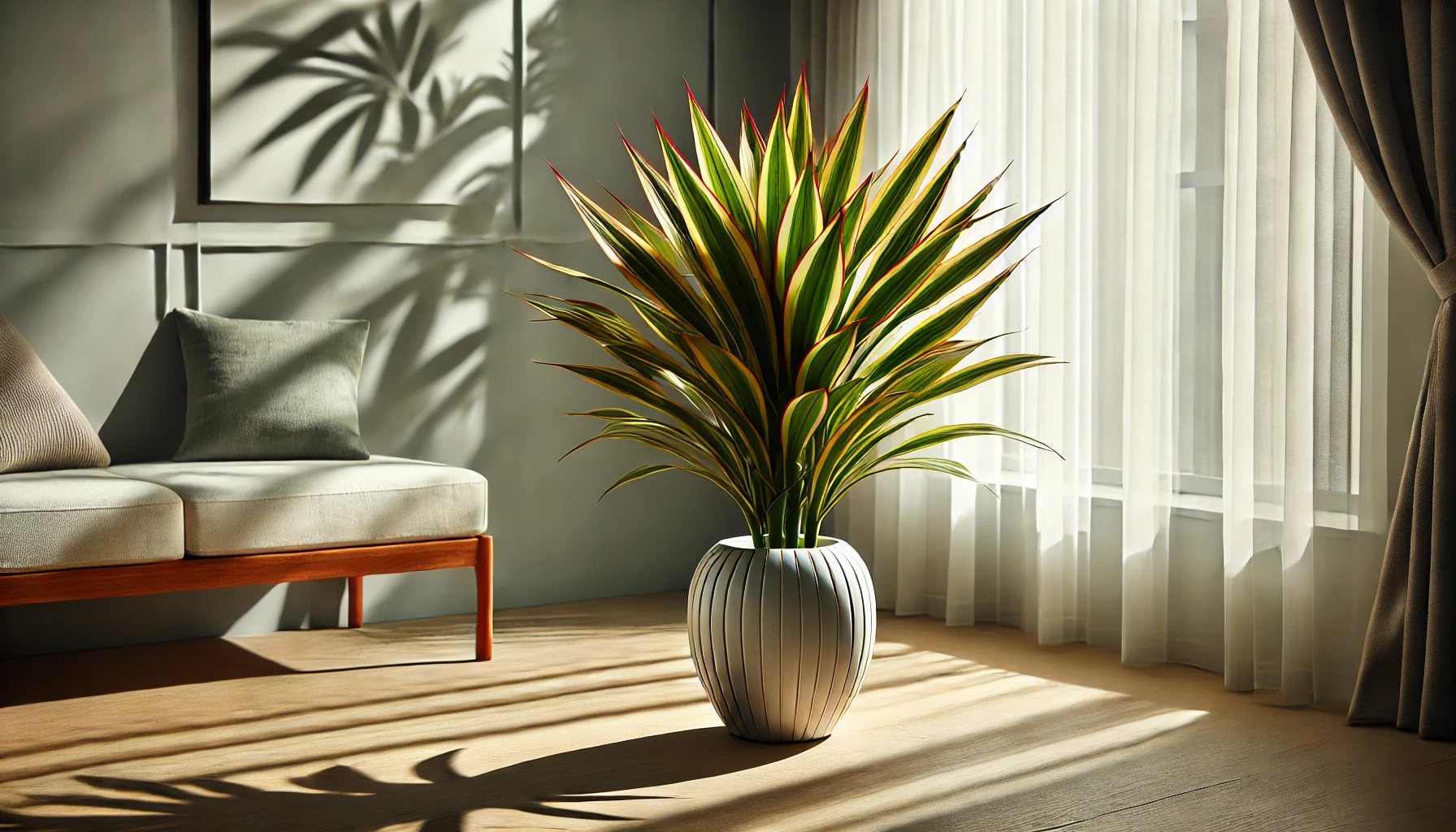
The Dracaena plant is a diverse group of popular houseplants known for their striking foliage and low-maintenance nature. With various species to choose from, such as Dracaena marginata (Dragon Tree) and Dracaena fragrans (Corn Plant), these plants can add a touch of elegance and greenery to any indoor space. Dracaenas can vary greatly in size depending on the species, with some growing up to 10 feet tall, making them perfect for both tabletops and floor displays.
A Rich History and Ideal Growing Conditions
Native to Africa, Madagascar, and other Indian Ocean islands, Dracaenas have been cherished for their ornamental value and resilience. They have become a staple in homes and offices due to their adaptability and low maintenance requirements. Dracaenas thrive in warm, humid environments that mimic their natural habitat. They grow best in bright, indirect light but can tolerate lower light conditions, making them versatile for various indoor settings.
Dracaenas and Pets: Important Information
While Dracaenas are beautiful and easy to care for, it is important to note that they are toxic to pets. If ingested by cats or dogs, they can cause vomiting, drooling, and loss of appetite. To keep your furry friends safe, ensure that your Dracaena is placed out of their reach.
Best Practices for Caring for Your Dracaena
Caring for a Dracaena is relatively straightforward, making it a great choice for both novice and experienced plant enthusiasts.
Watering and Humidity
Dracaenas prefer consistently moist soil but do not like to sit in water. Water the plant thoroughly when the top inch of soil feels dry, and ensure that excess water drains out of the pot to prevent root rot. In general, watering every 1-2 weeks is a good starting point, but you may need to adjust based on your specific environment. These plants thrive in average household humidity levels and do not require additional humidity, although they appreciate occasional misting in drier environments.
Soil, Light, and Temperature
A well-draining potting mix is essential for Dracaenas. They grow best in bright, indirect light but can also tolerate lower light conditions. Place your plant near a window where it can receive plenty of light, but avoid direct sunlight, which can scorch the leaves. Dracaenas prefer temperatures between 65°F and 80°F. They are relatively hardy but should be protected from cold drafts and sudden temperature changes.
Common Problems and Remedies
Even with the best care, Dracaenas can encounter some common issues. Yellowing leaves can be a sign of overwatering or poor drainage. To remedy this, ensure the soil is well-draining and adjust your watering schedule accordingly. Brown leaf tips can be caused by dry air or inconsistent watering. Maintaining a regular watering schedule and occasionally misting the plant can help prevent this issue.
Dracaenas can also be affected by pests such as spider mites, mealybugs, and scale. To combat these pests, use a water and mild soap solution or neem oil spray. Regularly inspecting your plant and wiping down the leaves can help prevent pest infestations.
Propagation and Benefits
Propagating Dracaenas is relatively easy and can be done through stem cuttings. Cut a healthy stem and place it in water or moist soil to root. This method is not only easy but also a great way to expand your collection or share plants with friends.
Dracaenas are not only beautiful but also beneficial to your indoor environment. They are known for their air-purifying qualities, helping to remove toxins such as formaldehyde and benzene from the air.
Final Thoughts
Dracaenas are one of the most versatile and easy-to-care-for houseplants you can find. Their striking foliage and adaptability make them a favorite among plant enthusiasts and interior designers alike. While they do require some attention to thrive, the rewards are well worth the effort. With the right care, your Dracaena can become a stunning focal point in your home. So why not add a Dracaena to your collection and enjoy the beauty and benefits it brings?
Stay connected with the world of plants! Subscribe to Phylofy for expert gardening tips, DIY projects, and eco-friendly inspiration. Join our community and nurture your love for nature. Don’t miss exclusive content and updates. Subscribe now!



